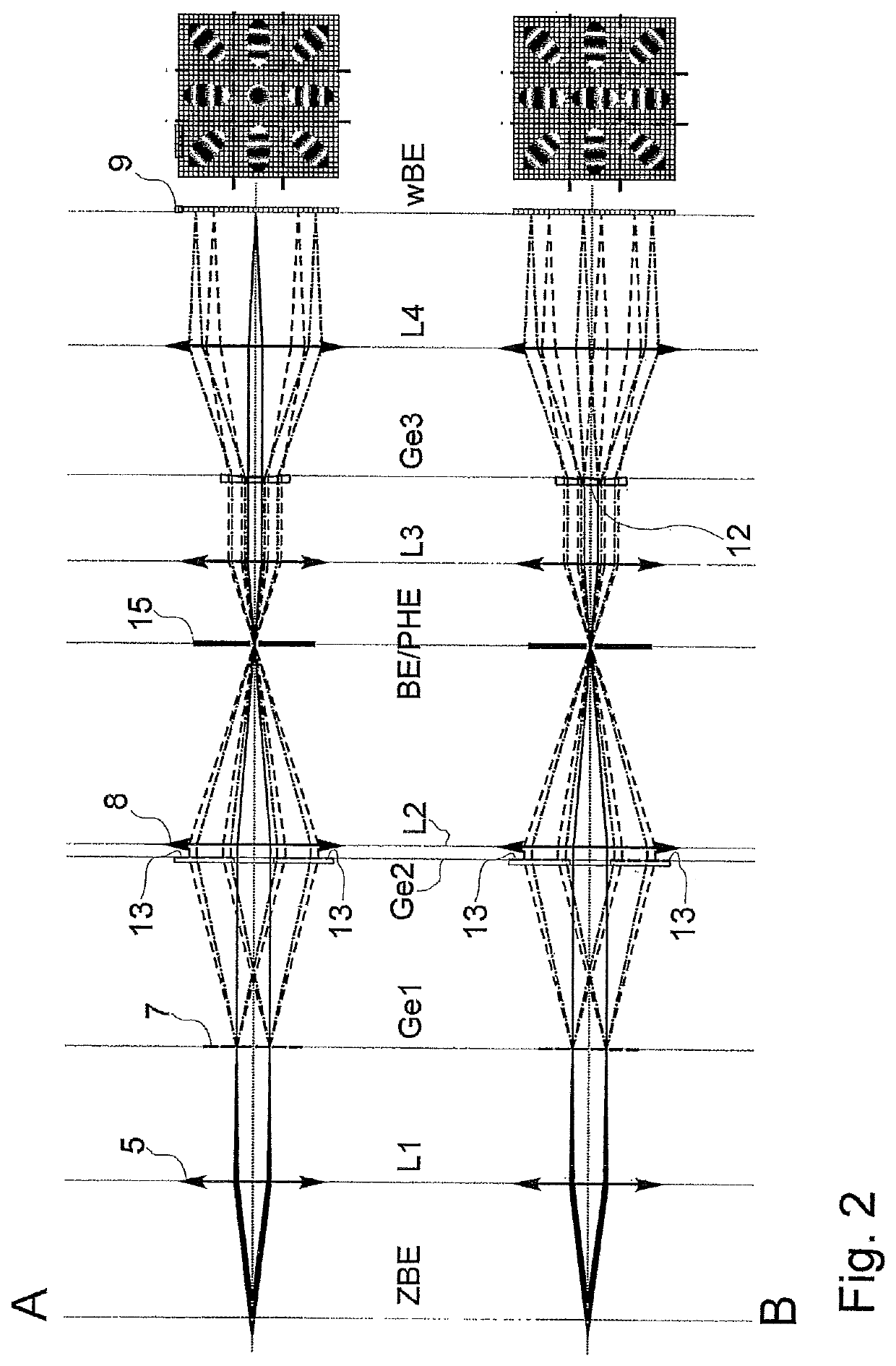Multifocal scanning fluorescence microscope
a fluorescence microscope and scanning fluorescence technology, applied in the field of scanning fluorescence microscopes, can solve the problems of increasing the loading of the sample, bleaching the sample, and the disadvantages of the sequence image composition
- Summary
- Abstract
- Description
- Claims
- Application Information
AI Technical Summary
Benefits of technology
Problems solved by technology
Method used
Image
Examples
Embodiment Construction
[0049]In all of the drawings, parts that coincide bear the same reference signs.
[0050]FIG. 1 schematically shows a scanning fluorescence microscope 1 in the form of a laser scanning microscope (LSM). Here, a laser as a light source 11 as an illumination system together with a microscope objective 2 defines an illumination beam path A, which contains a phase mask 10 and is combined (optically coupled) by a beam splitter 6, for example a dichroic beam splitter cube, with the observation beam path B. The phase mask 10 is arranged outside the observation beam path B. An optical transfer system 5 images the plane of the phase mask 10 onto a deflecting unit 4, which can deflect the excitation light beam in the x and y directions. A further optical transfer system 3 images the deflecting unit 4 into the pupil plane of the objective 2. The objective 2 focuses the laser beam into the sample P, the lateral position of the illumination volume depending on the deflecting angles that are set on ...
PUM
 Login to View More
Login to View More Abstract
Description
Claims
Application Information
 Login to View More
Login to View More - R&D
- Intellectual Property
- Life Sciences
- Materials
- Tech Scout
- Unparalleled Data Quality
- Higher Quality Content
- 60% Fewer Hallucinations
Browse by: Latest US Patents, China's latest patents, Technical Efficacy Thesaurus, Application Domain, Technology Topic, Popular Technical Reports.
© 2025 PatSnap. All rights reserved.Legal|Privacy policy|Modern Slavery Act Transparency Statement|Sitemap|About US| Contact US: help@patsnap.com



